Swallows of the United States: Eight Swallows to Know
You've probably seen swallows darting back and forth on fluttering wings, plucking insects out of the air to eat. Swallows — members of the bird family Hirundinidae, which includes 86 species worldwide — are part of a broader category of birds called aerial insectivores, meaning they catch insects on the wing.
Swallows are small birds with slender, pointed wings and small beaks and feet. They typically live in open habitats, often near water. Although the specifics of their nesting habitats vary from species to species, most swallows are socially monogamous, meaning one male and one female pair off to raise young, and both parents contribute to caring for their young.
Swallows and other aerial insectivores are of special interest to scientists and conservationists because populations of many birds in this group are declining across North America and Europe. The reasons why aren't yet fully understood. One major factor is probably agricultural pesticides used in habitats frequented by swallows: You can't have healthy aerial insectivore populations without lots of insects for them to eat, and our attempts to eliminate agricultural pests may be inadvertently harming birds that hunt for flying insects over fields and farms.
Below, we've profiled each of the eight swallow species found in the United States. Keep an eye out for these tiny insect-eaters the next time you go for a walk!
Northern Rough-winged Swallow

This plain, dusty-brown swallow with telltale smoky sides breeds across the lower 48 U.S. states and in southern Canada, then winters in the far-southern U.S., Mexico, and Central America. Another population breeds in Mexico. The unusual name comes from the stiff barbs on males' leading flight feathers. These birds nest in natural crevices or burrows left by other species and also in human-made structures: Northern Rough-winged Swallow nests have been found in gutters, drainpipes, and holes in walls. This species' ability to make use of these nest sites helps it adapt to areas modified by human activities. Look for Northern Rough-winged Swallows flying low over water to snatch up insects.
Bank Swallow
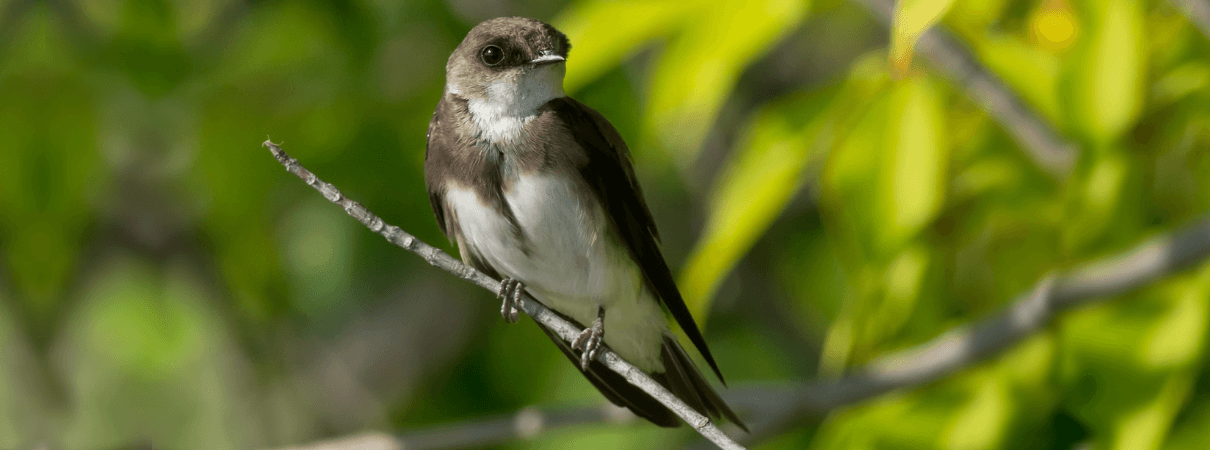
Both the Bank Swallow's common name and its scientific name, Riparia riparia, give a clue to a preferred habitat: streamsides, where this bird nests colonially in burrows excavated in sandy banks. The Bank Swallow breeds across a large portion of North America and migrates to South America, but this species also nests across Eurasia, wintering in Africa and parts of tropical Asia; there, it is known as the Sand Martin, or Collared Sand Martin. Bank Swallows are brown above and white below, with a distinctive dark band across the chest. They're hard to survey accurately thanks to their ever-shifting colony sites, but Partners in Flight considers them a “common species in steep decline,” meaning action may be needed to keep populations healthy.
Barn Swallow
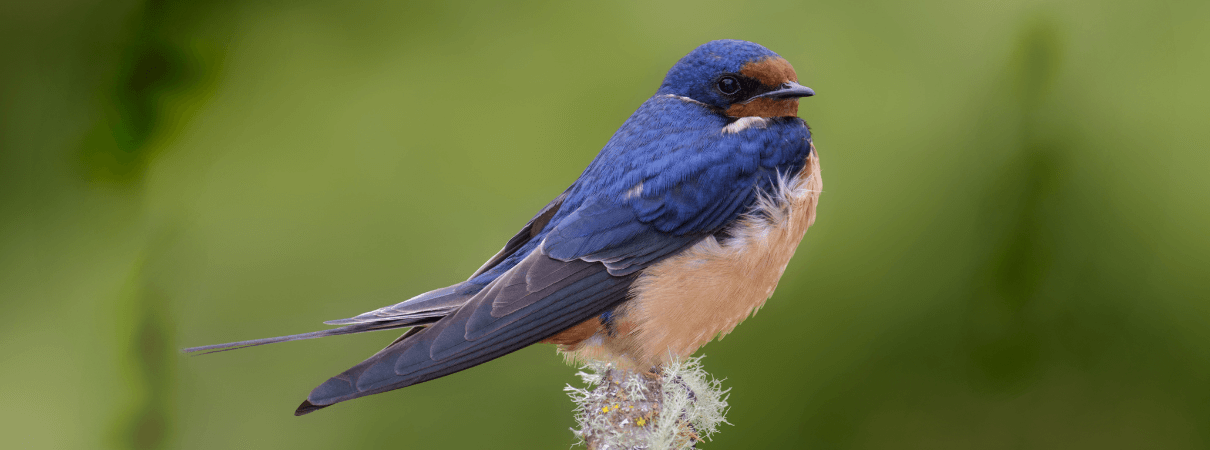
Like Bank Swallows, Barn Swallows have a worldwide distribution, and they are simply called “Swallows” in Europe. They can be recognized by their long, forked tails, and are blue above with orangey underparts and brick-red foreheads and throats. They build nests of mud, located primarily on human-made structures including bridges and culverts, as well as in barns. Their long association with humans has led to appearances in the folktales and superstitions of many cultures. North America's Barn Swallow populations have declined by approximately 38 percent since 1970, likely due to the effects of climate change and agricultural pesticides.
Purple Martin
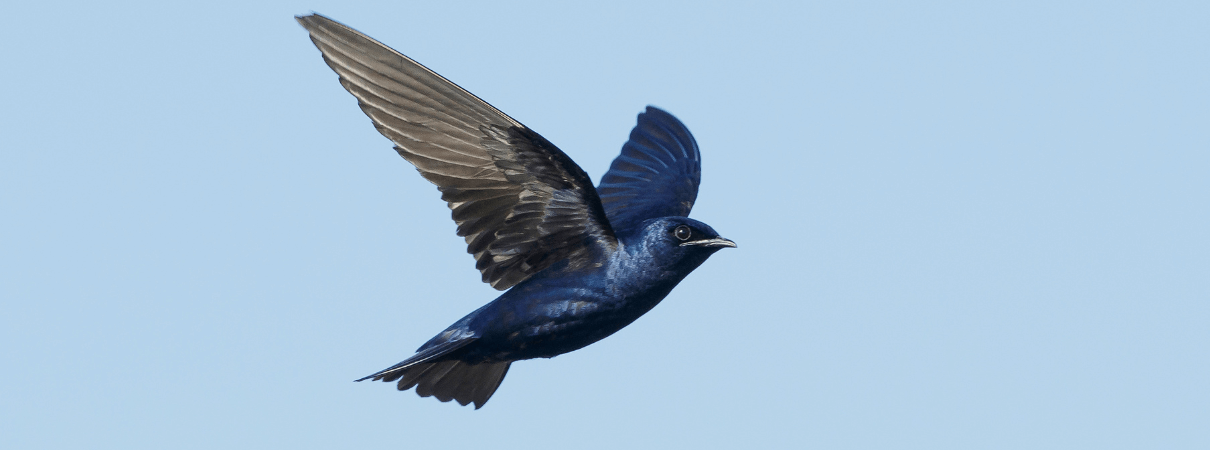
The largest and darkest swallows in North America, Purple Martins breed mostly in the eastern U.S. and southern Canada, with scattered populations in the West. They migrate to South America to winter. Males are a deep blue-black, and females are duller with gray napes. Eastern birds probably nested historically in old woodpecker holes, but today they almost exclusively use apartment-style birdhouses provided by humans; western Purple Martins nest in natural cavities as well as birdhouses. Purple Martin populations have declined by about 23 percent since 1970. Threats to this species include agricultural pesticides, collisions with human-made structures, and competition for nest sites from introduced House Sparrows and European Starlings.
Tree Swallow
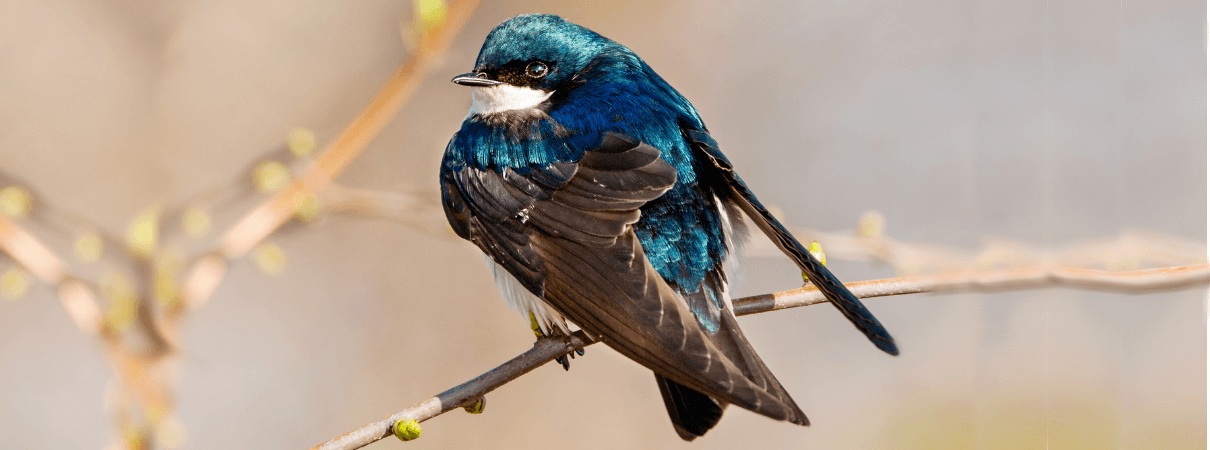
Male Tree Swallows are iridescent blue-green above and white below, and females are similar but duller overall. They often nest in old woodpecker cavities, and competition for nest sites can be intense, but they also eagerly move into nest boxes. Tree Swallows breed in much of the U.S. and Canada, winter from the southern U.S. south to Central America, and they are typically found in open habitats near water. They have been gradually expanding their breeding range southward, but overall their populations have declined by about 40 percent since 1970. Tree Swallows' affinity for wetland habitats makes them vulnerable to exposure to mercury and other aquatic contaminants.
Violet-green Swallow
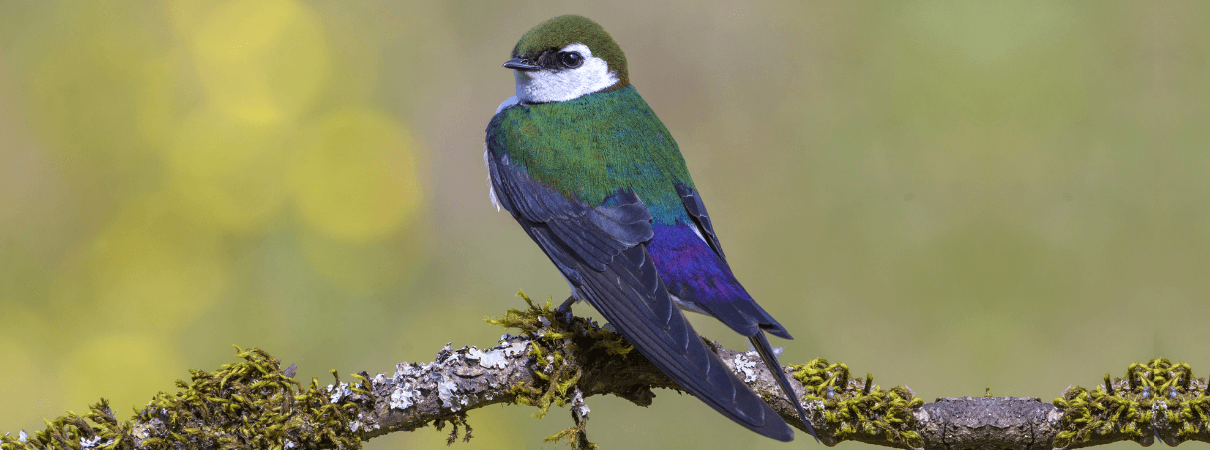
The most colorful of North America's swallows, Violet-green Swallows have iridescent green and purplish backs, white undersides, and distinctive white patches on their rumps and faces. They are the only United States swallow found only in the West, breeding in the western U.S. and Canada and northern Mexico and wintering across much of Mexico, and in parts of Central America. Violet-green Swallows are close relatives of Tree Swallows and nest in rock crevices and old woodpecker cavities in open coniferous forests. Their populations are relatively stable overall, but some bird surveys suggest that they, like other aerial insectivores, are experiencing a gradual long-term decline.
Cliff Swallow
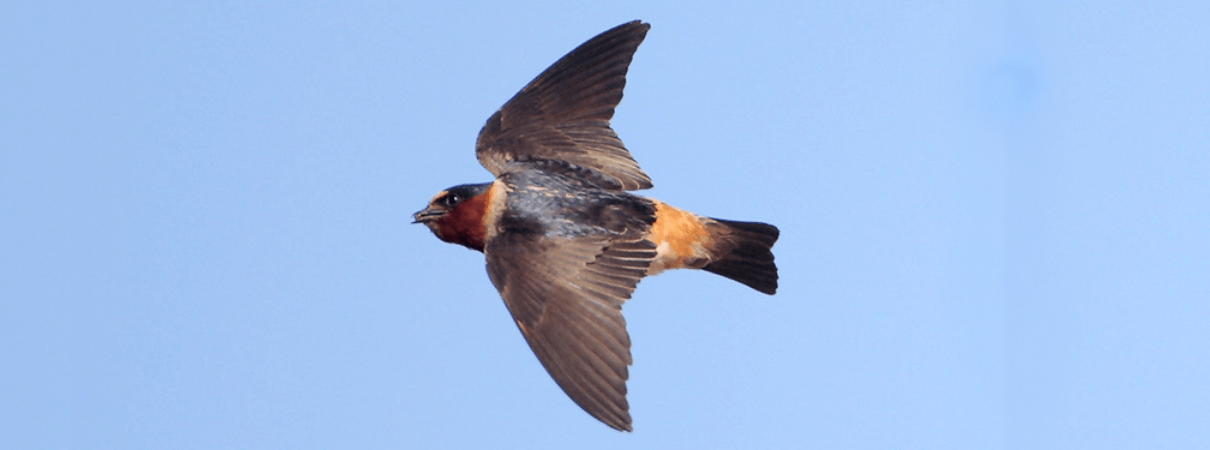
Cliff Swallows once nested primarily in the mountains of western North America, but they've expanded east as they've adapted to nesting on human structures in addition to natural cliffs. Their populations are stable to increasing. Today, Cliff Swallows breed throughout much of the U.S., Canada, and Mexico, forming colonies of up to 6,000 nests. In winter, they migrate to South America. Like several other swallows on this list, Cliff Swallows are primarily blue above and whitish underneath, but they're set apart by chestnut throats, white forehead patches (in most U.S. and all Canadian populations), square tails, and pale rumps.
Cave Swallow
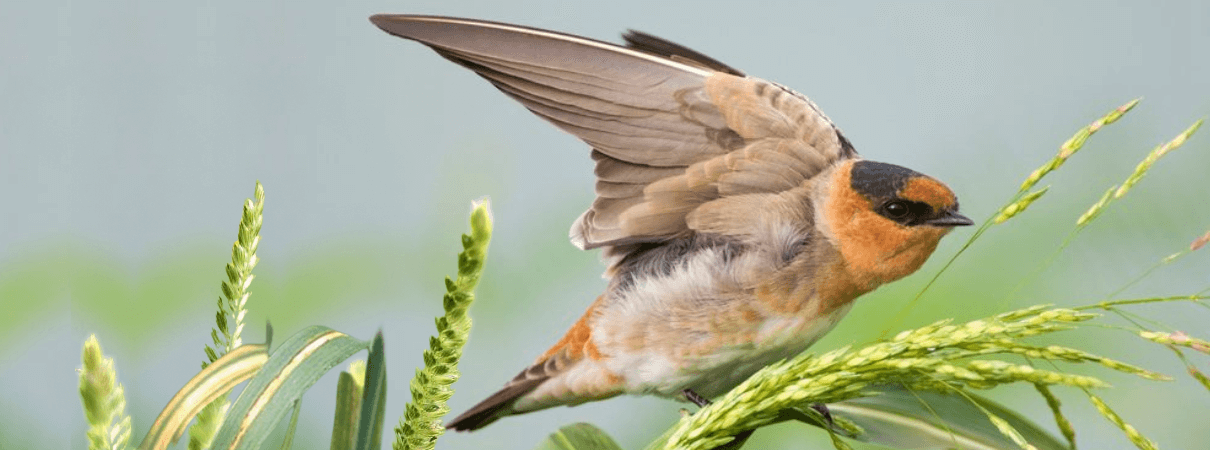
In the U.S., the Cave Swallow nests mainly in Texas and South Florida, though there are also some places in New Mexico and Oklahoma where they breed. They are widespread in Mexico and the Caribbean. Cave Swallows are similar in appearance to their close relatives the Cliff Swallows, but with paler throats and no white forehead patch. Their natural nesting habitat is caves, as their name suggests, where their colonies may share space with bats. However, as with many other swallow species, the Cave Swallow has adapted to nesting on human-made structures. In fact, Cave Swallows expanded their range into the U.S. since the beginning of the 20th century largely by using highway overpasses and bridges as colony sites. Their population has increased significantly in recent decades.
In Habitat Is Hope
In less than a single human lifetime, nearly 3 billion birds have been lost from the United States and Canada, including familiar backyard birds such as the Dark-eyed Junco and White-throated Sparrow.
The dramatic decline is largely a result of widespread habitat loss and degradation. The losses grow as natural areas are converted for agriculture, resource extraction, and other uses. Even habitats that appear pristine can harbor threats — such as overuse of toxic pesticides — and result in dwindling bird populations.
American Bird Conservancy's work centers on conserving bird habitat across the Americas. In some cases, that means strict protection of the land (such as in ABC's Bird Reserve Network, extending across more than 100 sites and 1 million acres). In others, we help landowners find bird-friendly ways to manage their land for declining species such as the Golden-winged Warbler and Long-billed Curlew. So far, we have contributed to better habitat management for birds on more than 8.5 million acres. To ensure habitats are as bird-friendly as possible, we work to reduce threats, from glass that causes bird collisions to predation by free-roaming cats.
Learn more about ABC's results in our Conservation Scorecard.



















































